I was never really a candy person. My Nanay always warned me about too much sugar and dental visits. But there's this one sweet treat that I just can't say no to: homemade Kundol Candy.
Every time I make this crystalline delicacy from winter melon, it takes me back to those simple afternoons in the '80s, when imported chocolates were rare finds and these translucent candies were our special treats.
I am fascinated when the humble kundol transforms into these glistening, jewel-like sweets that somehow feel less guilty than commercial candies - maybe because we know exactly what goes into them, or perhaps it's because they're made from a vegetable (yes, I use this excuse every time).
After years of perfecting this kundol candy recipe passed down from my Lola, I'm excited to share with you my tried-and-tested method for creating these irresistible Filipino treats that have been making generations of Pinoys smile.
What is Kundol Candy?
Kundol candy is a traditional Filipino confection made by transforming winter melon into translucent, crystalline sweets through a careful process of boiling with alum and cooking in sugar syrup. This heritage recipe, popularized in the 1980s before imported sweets became common, turns the mild-flavored gourd into glistening, bite-sized treats that showcase both the ingenuity of Filipino culinary traditions and the art of candy-making using simple, natural ingredients.
Jump to:
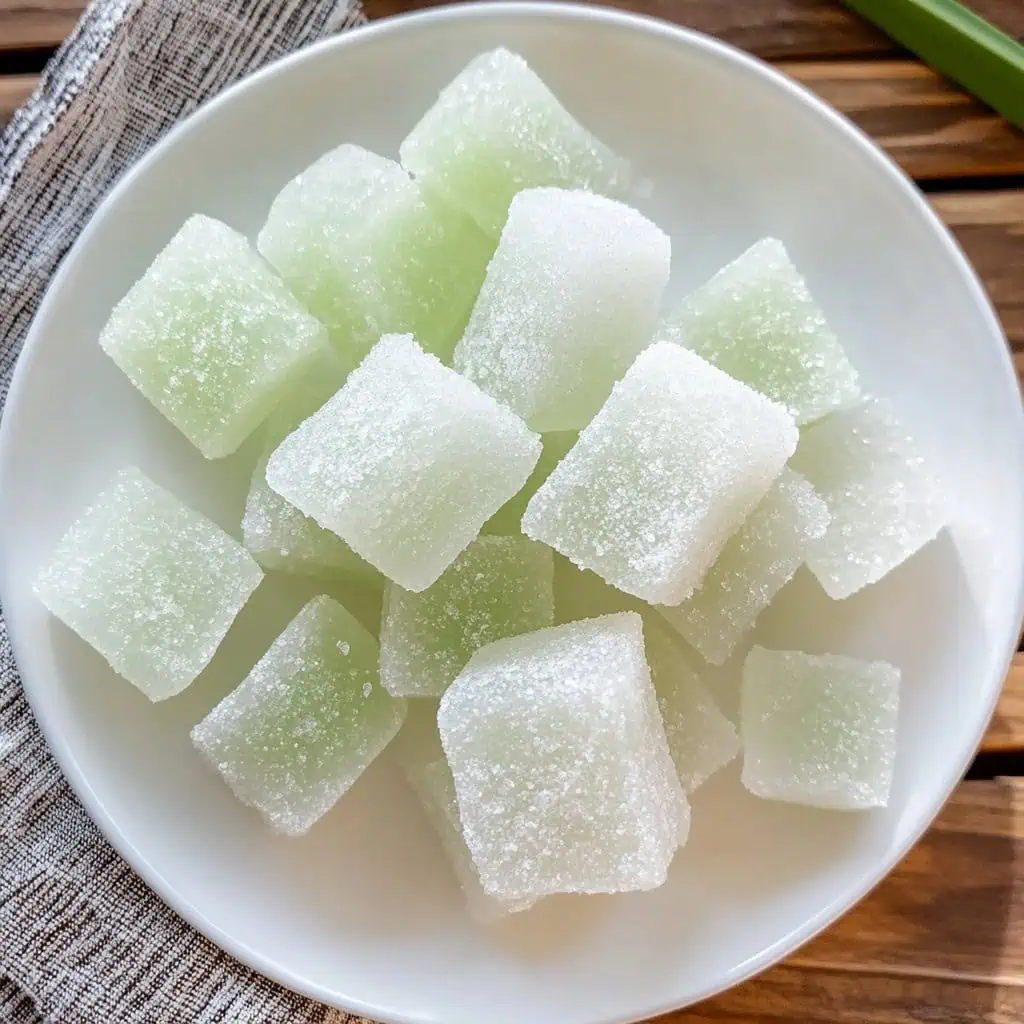
Why You'll Love This Recipe
- Authentic Filipino heritage recipe passed down through generations
- Crystal-clear appearance with a beautiful translucent finish
- Perfect balance of sweetness and subtle melon flavor
- Cost-effective alternative to store-bought candies
- Makes a wonderful homemade gift
- Can be stored for extended periods
Ingredients
The ingredients in this Filipino Kundol Candy recipe have been carefully selected for their specific purposes. Winter melon serves as the perfect base because its mild flavor absorbs sweetness well while maintaining a pleasing texture. White sugar creates the crystal-clear appearance that makes these candies so visually appealing while providing the necessary sweetness.
Alum powder is essential for maintaining the crispness and translucent quality of the finished candy, helping the melon pieces hold their shape. Lemon juice acts as a natural clarifying agent that prevents crystallization and adds a subtle brightness that balances the sweetness.
Together, these simple ingredients transform a humble vegetable into jewel-like candies that showcase traditional Filipino ingenuity in creating delicious treats from everyday ingredients.
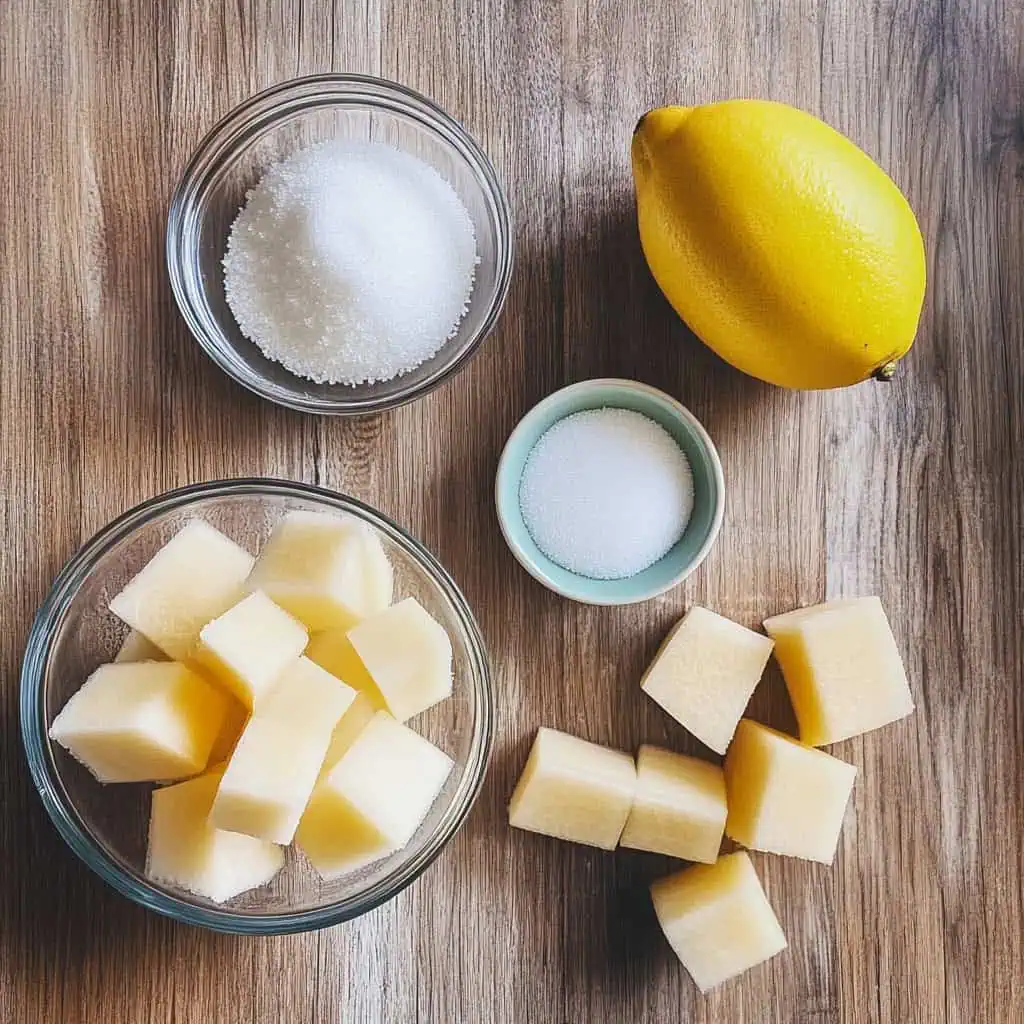
- 1 kg Winter Melon (Kundol)
- 750 g white sugar
- 1 teaspoon Alum powder
- 1 tablespoon Lemon juice
- Water, as needed
- Extra sugar for coating
Equipment
- Large sharp knife - For safely cutting the winter melon into even pieces
- Fork or bamboo skewer - Used to prick the melon pieces to allow better syrup absorption
- Large heavy-bottomed pot - Ensures even heat distribution during boiling and syrup-making
- Candy thermometer - Helps achieve precise syrup consistency for perfect texture (optional but recommended)
- Strainer - For draining the boiled melon pieces efficiently
- Slotted spoon - Makes it easy to remove candy pieces from hot syrup without excess liquid
- Baking sheet - Provides a flat surface for cooling candies without sticking
- Airtight container - Essential for proper storage to maintain freshness and texture
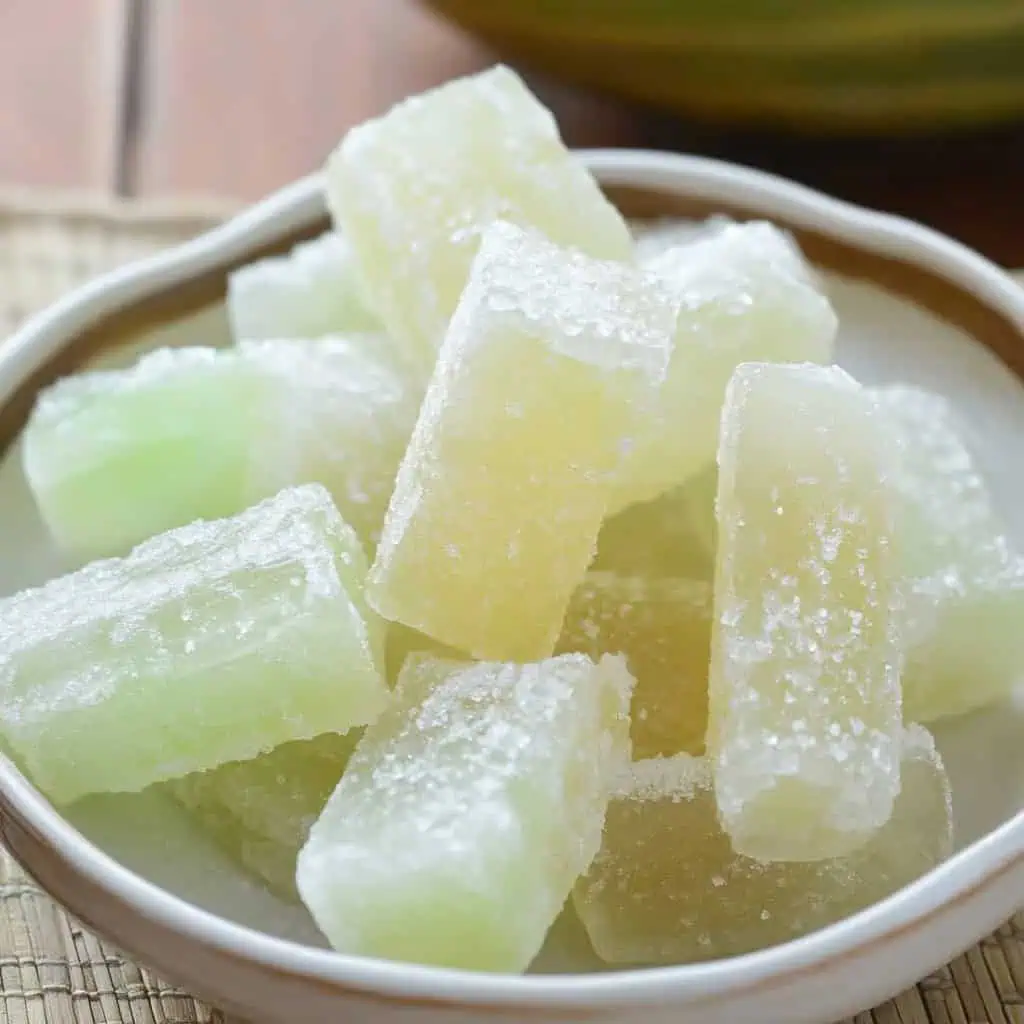
How To Make
- Thoroughly wash the winter melon. Cut in half, remove skin and seeds, then cut into 1-inch cubes or desired shapes at room temperature.
- Prick each piece with a fork to allow better syrup absorption. Place the pieces in a large pot and add enough water to cover. Add alum powder.
- Bring to a rolling boil at 100°C/212°F and cook for 10-15 minutes until the melon is slightly tender but still firm. Drain and rinse thoroughly under running water.
- For the syrup, combine sugar with 1 cup water over medium heat (160°C/320°F) until sugar dissolves completely. Add lemon juice to clarify the syrup.
- Add the boiled kundol pieces to the syrup and cook at medium-low heat (150°C/302°F) for 20-25 minutes until pieces become translucent and syrup reaches three-thread consistency.
- Remove pieces individually using a slotted spoon and place on a baking sheet with space between pieces. Allow to cool slightly, then roll in extra sugar while still warm.
- Let cool completely before transferring to an airtight container. The candies will keep for 2-3 weeks at room temperature or up to 2 months when refrigerated.

Tips from Lola's Kitchen
- Select the right melon: Choose a winter melon that feels heavy for its size with firm, unblemished skin.
- Sugar quality matters: Use only white granulated sugar for the traditional clear appearance.
- Test syrup readiness: Drop a small amount of syrup into cold water - it should form a soft ball when ready.
- Manage your heat: Keep heat consistent but not too high to prevent caramelization and darkening.
- Perfect timing is key: Remove candies from syrup once translucent but before they become too dark.
- Spacing prevents sticking: Always leave space between candies when cooling to prevent them from forming one mass.
- Sugar while warm: Roll candies in sugar when they're still slightly warm for better coating adhesion.
- Dry climate is best: Try making these on low-humidity days for best results and faster drying.
Substitutions
- Lemon juice: Calamansi, lime juice, or even a touch of citric acid powder can be used.
- White sugar: Rock sugar can be substituted but will affect the clarity of the finished candy.
- Alum powder: Lime water can be used as an alternative, though it will affect the final texture.
- Winter melon: In a pinch, white-fleshed watermelon rind (with green skin removed) can work, though the flavor and texture will differ.
- Sugar coating: Powdered sugar can be used instead of granulated for a different finish.
Troubleshooting
- Candy is too hard: The syrup was likely cooked too long or at too high a temperature. Next time, reduce cooking time or use a candy thermometer to monitor temperature more closely.
- Candy is not translucent: This could be due to insufficient cooking time or melon pieces that are cut too large. Ensure pieces are uniform in size and give them enough time in the syrup.
- Candy is sticky even after cooling: The syrup wasn't cooked to the proper consistency or high humidity is affecting storage. Cook syrup longer next time and store in a cool, dry place with a desiccant pack.
- Crystals forming in the syrup: This happens when sugar recrystallizes. Add a few drops more of lemon juice and avoid stirring the syrup after it begins to boil.
- Candies yellowing too quickly: Heat was likely too high during syrup cooking. Maintain a gentle simmer rather than a rolling boil.
Storage & Reheating
- Short-term storage: Keep in an airtight container at room temperature for 2-3 weeks.
- Long-term storage: Refrigerate for up to 2 months in an airtight container with parchment paper between layers.
- Freezing option: Not recommended as it alters the texture.
- Countering humidity: Add a small packet of food-grade silica gel or a piece of bread in the container (replaced regularly) to absorb excess moisture.
- Reviving stale candy: If candies become slightly soft, spread them on a baking sheet and place in a 200°F oven for 10 minutes, then cool completely before storing again.
- Serving temperature: Always bring refrigerated candies to room temperature before serving for the best texture and flavor.

FAQ
Why is alum powder used in this recipe?
Alum helps maintain the crispness and translucent appearance of the candy. It also provides a slightly firmer texture to the finished product.
Can I reduce the amount of sugar in this recipe?
Sugar is essential for both preservation and texture in this candy. Reducing it significantly will affect both quality and shelf life. For a less sweet version, you can increase the lemon juice slightly.
Why must the melon pieces be pricked with a fork?
Pricking allows better absorption of the syrup throughout the cooking process and ensures even cooking from the inside out.
How do I know when the syrup reaches three-thread consistency?
When you lift the spoon from the syrup, it should form three distinct threads as it falls back into the pot. Alternatively, use a candy thermometer to reach 230-235°F (110-112°C).
Can I use another type of melon if winter melon isn't available?
Winter melon has a unique texture that works best for this candy. While white-fleshed watermelon rind can be substituted, the results will differ in both texture and flavor.
How can I make my candies extra clear and transparent?
Use the freshest winter melon, filtered water, and make sure to rinse the pieces thoroughly after boiling with alum. Also, adding the specified amount of lemon juice helps clarify the syrup.
Why did my candies turn yellow or brown?
If your candies are darkening, your cooking temperature may be too high. Lower the heat and watch carefully during the final cooking stage.
Is this candy suitable for people with diabetes?
This is a high-sugar treat and is not recommended for people with diabetes or those on low-sugar diets without appropriate portion control and medical guidance.
How can I tell if my winter melon is fresh and good for candy-making?
A fresh winter melon should feel heavy for its size, have firm skin without soft spots, and a fresh, slightly sweet smell when cut open.
Can I make a larger batch and preserve it longer?
Yes, you can double or triple the recipe with the same proportions. For longer storage, consider processing in sterilized jars with proper canning techniques.
Related
Looking for other recipes like this? Try these:
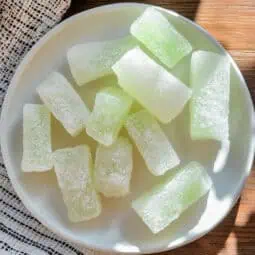
Traditional Filipino Kundol Candy Recipe (Winter Melon Candy)
Equipment
- Large sharp knife (pamutol) for cutting the melon safely
- Fork or bamboo skewer (tinidor o tusok) for pricking the melon pieces
- Large heavy-bottomed pot (malaking kaldero) for boiling the melon
- Candy thermometer (optional) for precise syrup consistency
- Strainer [Salaan] for draining the boiled melon
- Slotted spoon (sandok na butas) for removing candy pieces
- Baking sheet (bandehado) for cooling the candies
- Airtight container (lalagyan) for storage
Ingredients
- 1 kg Winter Melon Kundol
- 750 g white sugar puting asukal
- 1 teaspoon Alum powder tawas
- 1 tablespoon Lemon juice katas ng dayap o limon
- Water tubig, as needed
- Extra sugar for coating dagdag na asukal para sa pagbabalot
Instructions
- Thoroughly wash the winter melon (kundol). Cut in half (hatiin sa gitna), remove skin and seeds (alisin ang balat at buto), then cut into 1-inch cubes or desired shapes at room temperature.
- Prick each piece with a fork (tusukin ng tinidor) to allow better syrup absorption. Place the pieces in a large pot (ilagay sa kaldero) and add enough water to cover. Add alum powder.
- Bring to a rolling boil at 100°C/212°F and cook for 10-15 minutes (pakuluan) until the melon is slightly tender but still firm. Drain and rinse thoroughly under running water.
- For the syrup, combine sugar with 1 cup water over medium heat (160°C/320°F) until sugar dissolves completely. Add lemon juice (katas ng dayap o limon) to clarify the syrup.
- Add the boiled kundol pieces to the syrup and cook at medium-low heat (150°C/302°F) for 20-25 minutes until pieces become translucent and syrup reaches three-thread consistency.
- Remove pieces individually using a slotted spoon and place on a baking sheet with space between pieces. Allow to cool slightly, then roll in extra sugar (dagdag na asukal) while still warm.
- Let cool completely before transferring to an airtight container. The candies will keep for 2-3 weeks at room temperature or up to 2 months when refrigerated.
Tips from Lola's Kitchen
- Use only white sugar for traditional clear appearance
- Fresh winter melon should feel heavy for its size
- Test syrup consistency by dropping in cold water - it should form a soft ball
- Avoid overcooking to prevent pieces from becoming too dark
- Keep pieces separated while cooling to prevent sticking
Nutrition
The Story Behind Filipino Kundol Candy
In the heart of Filipino kitchens, long before global sweets dominated our sari-sari stores, Kundol candy (Minatamis na Kundol) emerged as a testament to Filipino ingenuity and resourcefulness. This crystalline delicacy, crafted from the winter melon (Benincasa hispida), shares its roots with the Indian petha and Chinese winter melon preserves, highlighting the dynamic cultural exchanges that enriched Southeast Asian cuisine.
What makes the Filipino version particularly special is its emergence during the 1980s, when imported chocolates and candies were luxury items found only in urban centers. Creative home cooks discovered that the humble kundol, a vegetable celebrated in the beloved Filipino folk song "Bahay Kubo," could be transformed into something magical. By combining traditional preservation techniques with local ingredients like alum (tawas), they created these jewel-like candies that quickly became a favorite pasalubong and merienda treat.
Today, Kundol candy represents more than just a sweet indulgence – it's a living piece of Filipino culinary heritage. While the winter melon itself originated from Southeast Asia, its transformation into these translucent candies speaks to the Filipino talent for adaptation and innovation. The recipe has been passed down through generations, with each family adding their own subtle touches while maintaining the characteristic glass-like appearance and delicate sweetness that makes this candy uniquely Filipino.
The enduring popularity of Kundol candy also tells a story of sustainability and practicality. Using locally available vegetables for confectionery wasn't just economical; it was a way for Filipino families to create something special from simple ingredients. This tradition of transforming everyday ingredients into extraordinary treats continues to inspire modern Filipino cuisine, making Kundol candy not just a recipe, but a piece of living history that connects us to our culinary roots.
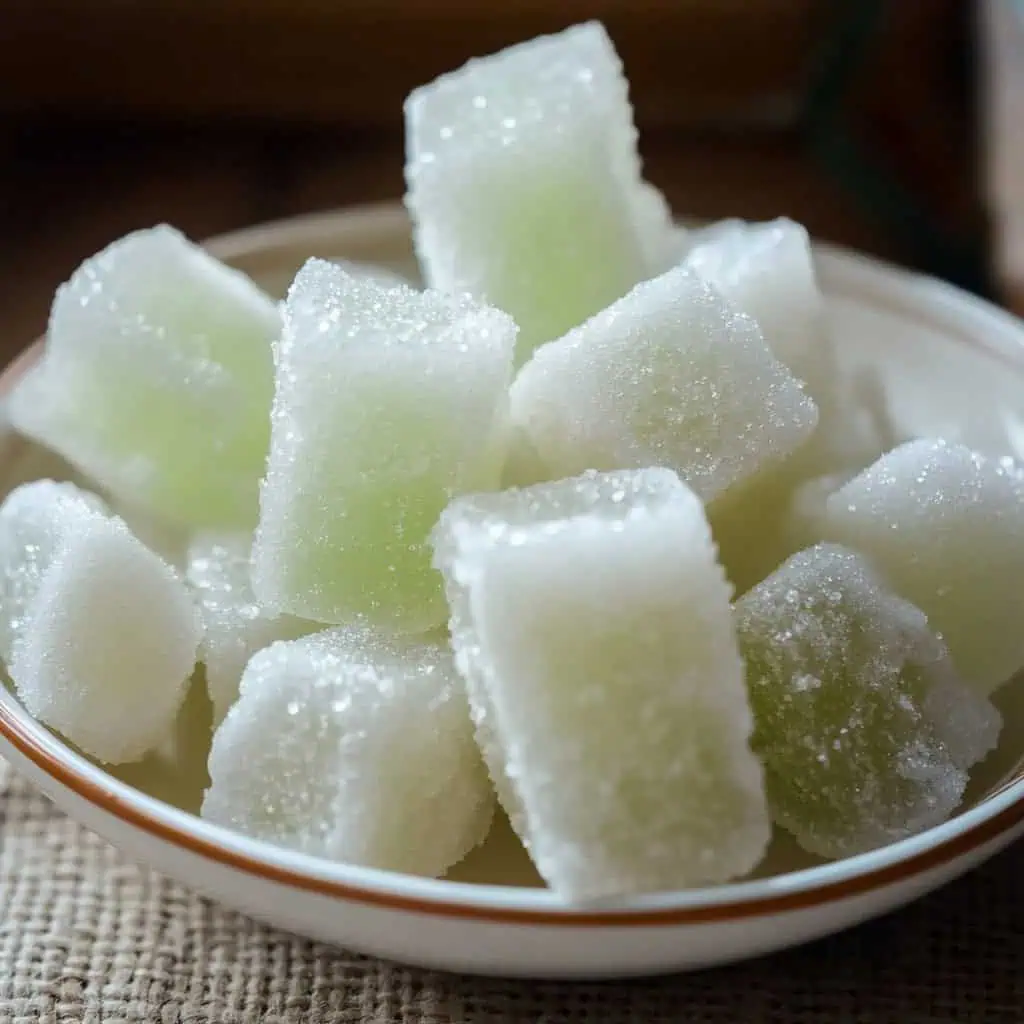






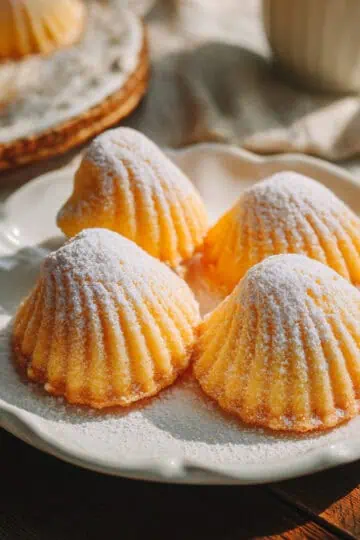
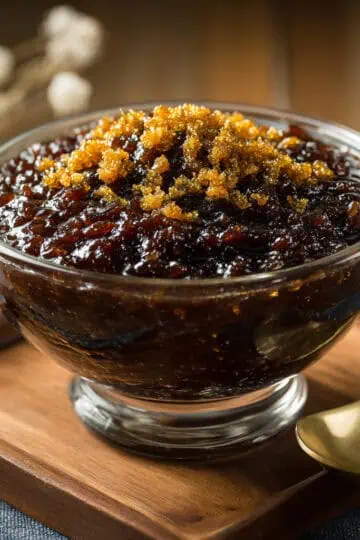
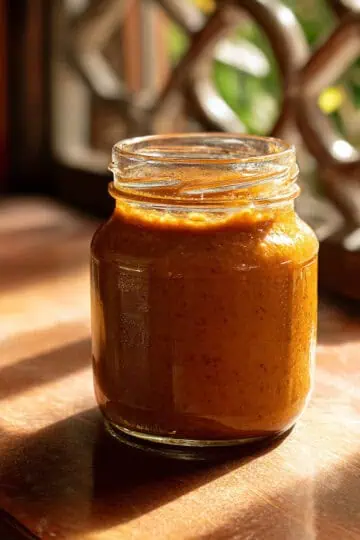
Comments
No Comments